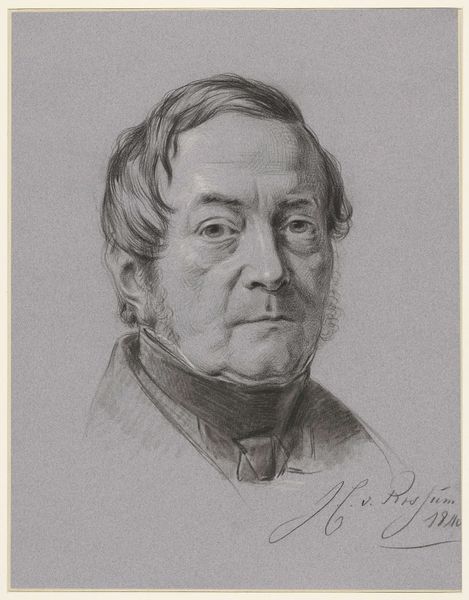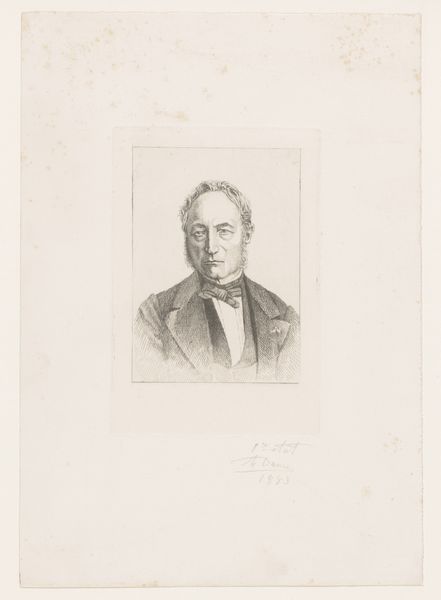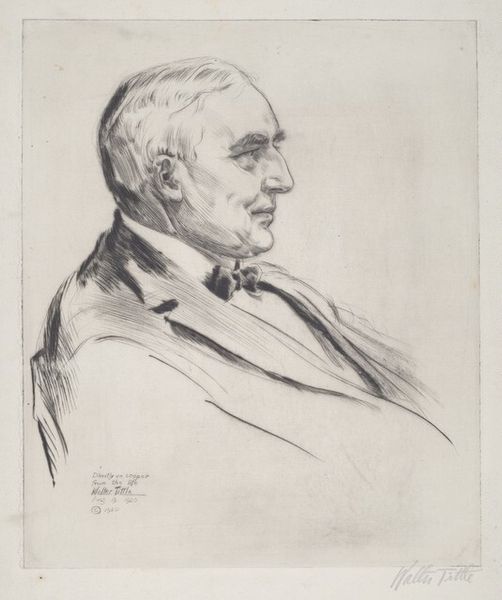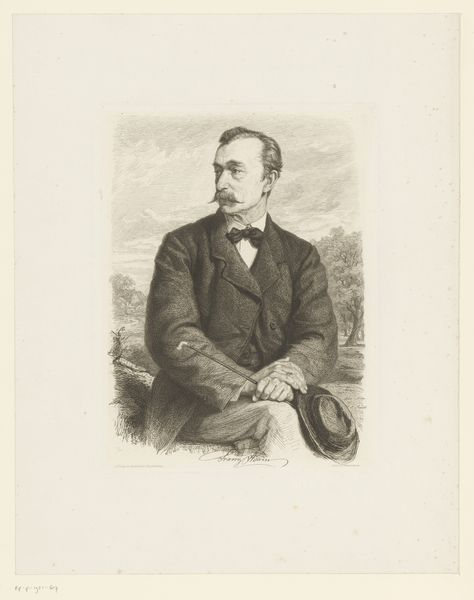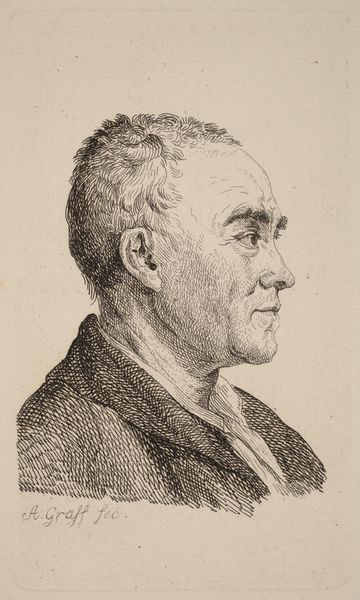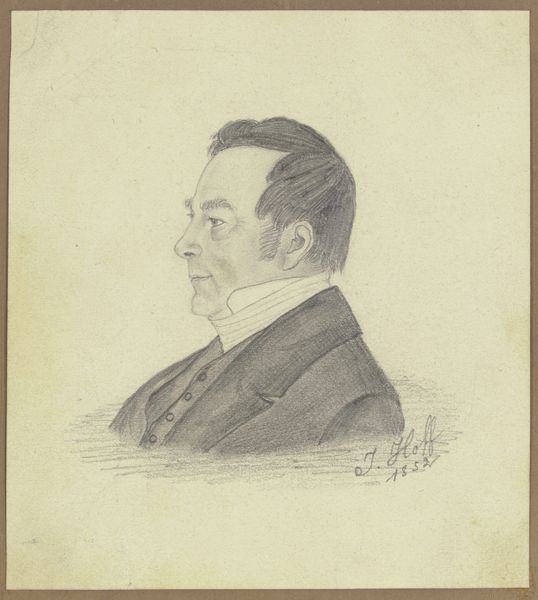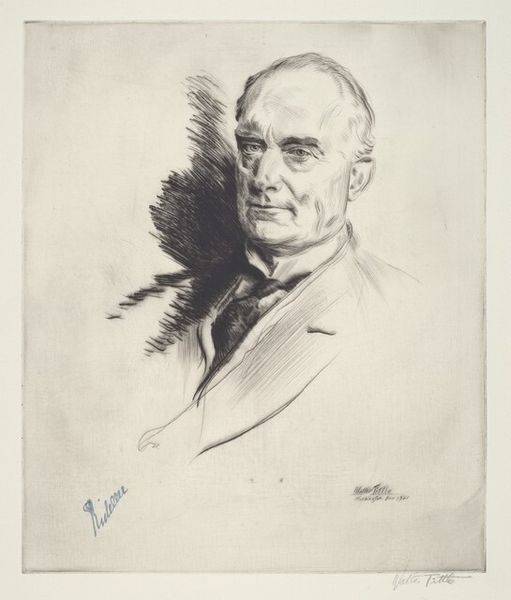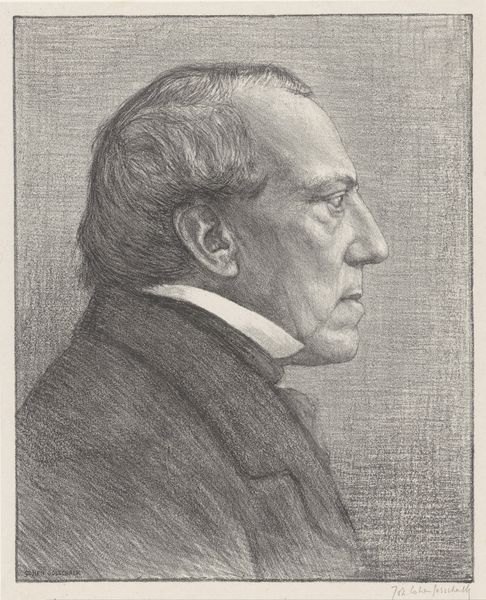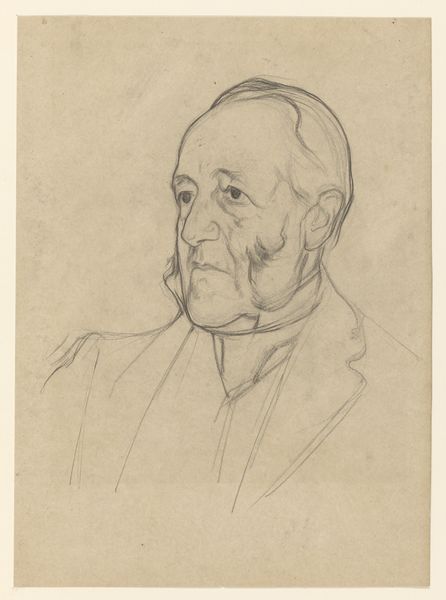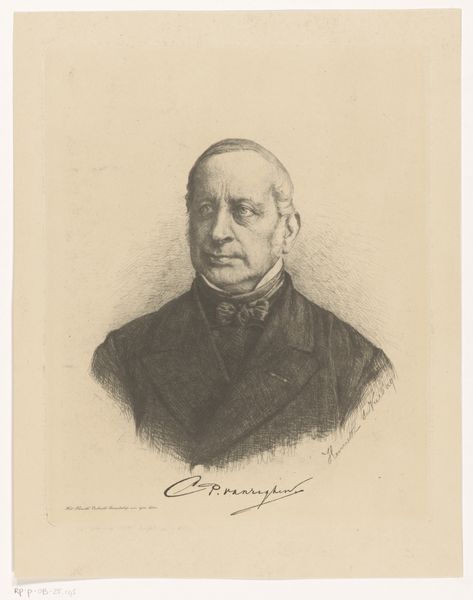
drawing, pencil
#
portrait
#
drawing
#
pencil sketch
#
pencil drawing
#
romanticism
#
pencil
#
portrait drawing
Dimensions: 207 mm (height) x 160 mm (width) (bladmaal)
Curator: Here we have J.V. Gertner's portrait of St. St. Blicher, rendered in pencil in 1845. A remarkable likeness of the writer, housed here at the SMK. Editor: The delicacy of the drawing strikes me immediately. There's a fragility in the lines, especially around the eyes, and in the almost wispy suggestion of his clothing. It gives him an ethereal, transient quality. Curator: That softness is characteristic of Romanticism, certainly, but also speaks to Blicher's later life. Gertner made this drawing just a few years before Blicher's death. Consider the socio-political context: Denmark was in a period of national awakening. Blicher was a voice of the people, and there’s perhaps an element of veneration at play here, memorializing him. Editor: That makes me think about the tools Gertner used. A simple pencil on paper—accessible, readily available. This speaks volumes about the democratization of portraiture during this period. No need for expensive oils or lengthy sittings. It becomes a gesture towards making art, and capturing an image, much more accessible. The paper, its texture… they all contribute. Curator: Absolutely. And in this light, let's consider Blicher’s glasses perched precariously atop his head. They act almost as a beacon of intellect, representative of the labor required of the literary figure and his access to textual knowledge. Think of the societal role of the writer during this period of nationalist fomentation. Editor: Right. The pencil itself too becomes this interesting vehicle. The act of drawing allows the quick capturing of details that photography might miss, or idealize. The artist is capturing his interpretation, with no need to disguise his craft as an 'idealized representation', adding authenticity in material and application. Curator: Precisely. There's a starkness here, almost a rawness that undercuts any idealization of Blicher the man. The deep lines around his eyes, the thinness of his hair, remind us of aging, mortality. It humanizes him even as it celebrates his legacy. It shows that materials don’t have to determine quality when intent is a major component. Editor: And focusing on those small material acts allows us to think more concretely about that legacy too. This drawing helps humanize and place him in time and in a society of craft, not just ideas. Curator: Looking closer reveals deeper nuances concerning both the art, the artist, and their interrelationship in time. Editor: Yes. It certainly offers a way to materially ground our interpretations.
Comments
No comments
Be the first to comment and join the conversation on the ultimate creative platform.


